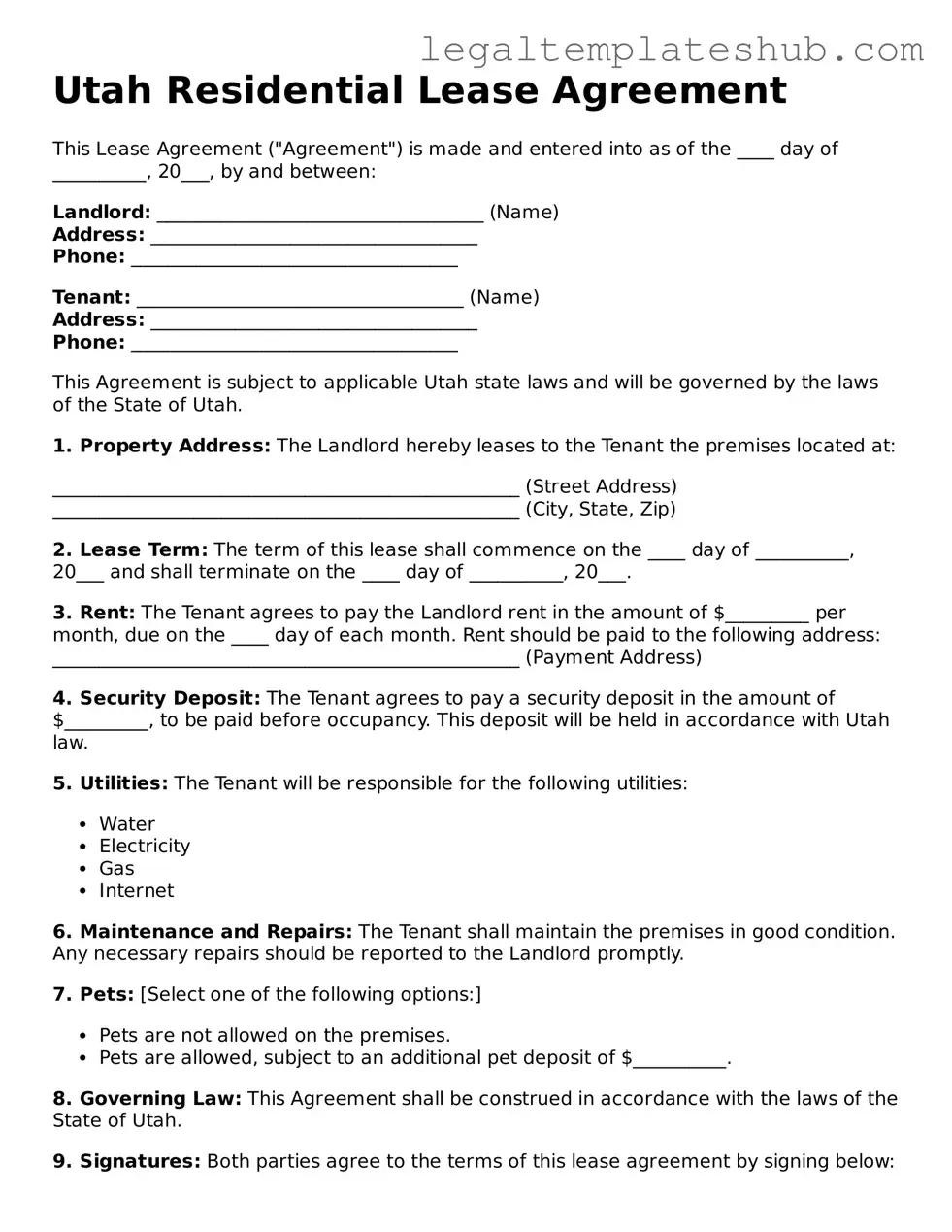Printable Lease Agreement Document for Utah
A Utah Lease Agreement is a legal document that outlines the terms and conditions between a landlord and a tenant for renting a residential property in Utah. This form serves to protect the rights of both parties while establishing clear expectations regarding rent, duration, and responsibilities. Understanding this agreement is crucial for ensuring a smooth rental experience, so consider filling out the form by clicking the button below.
Access Editor
